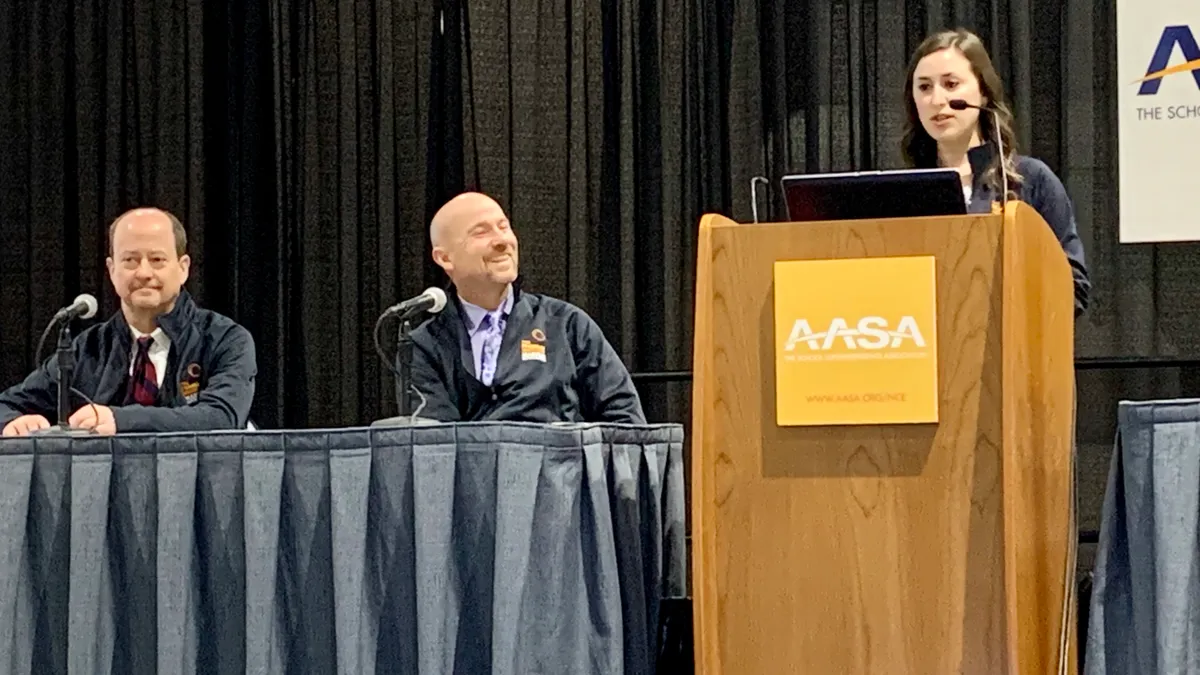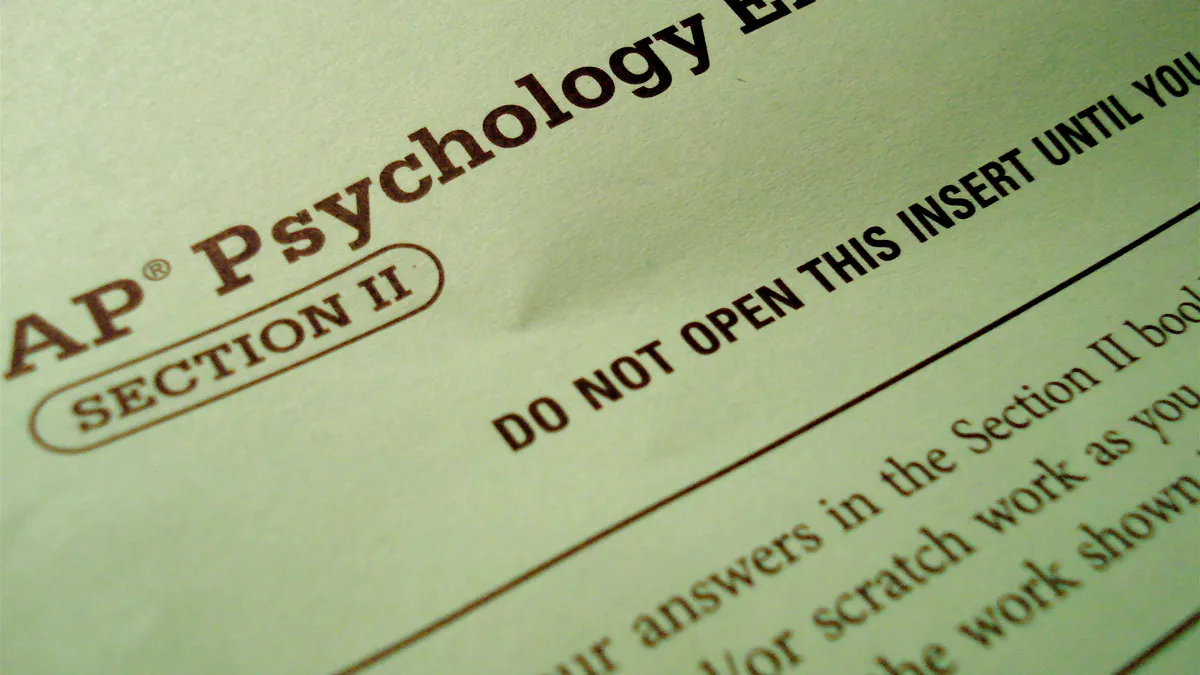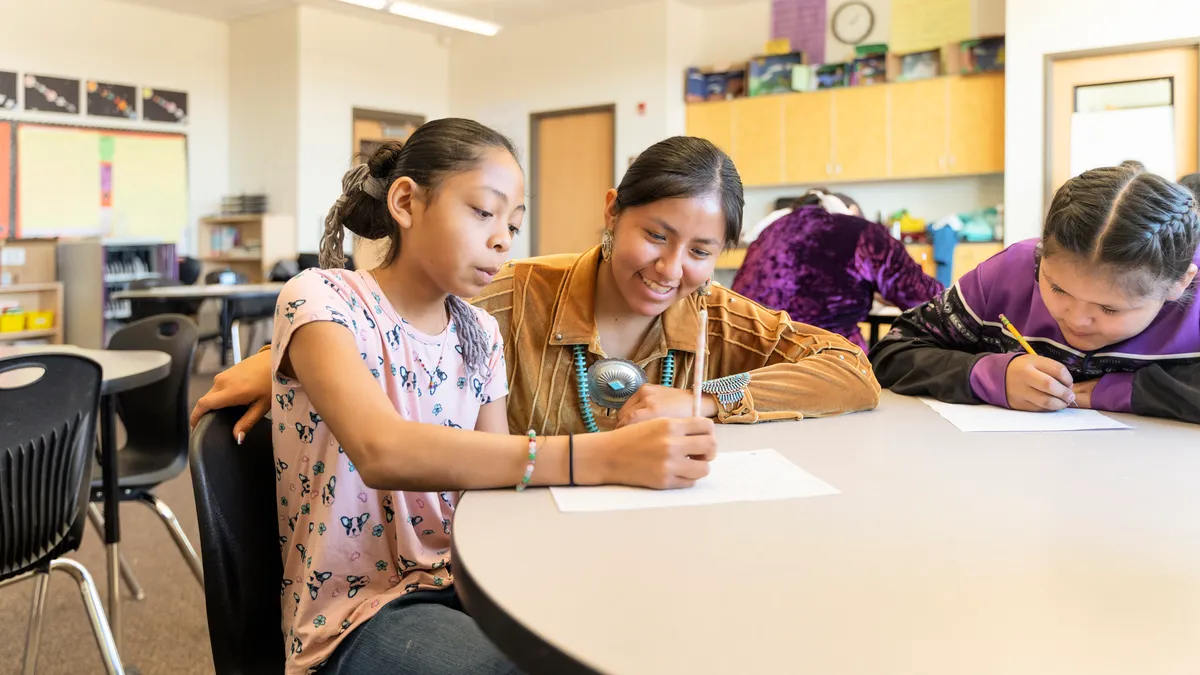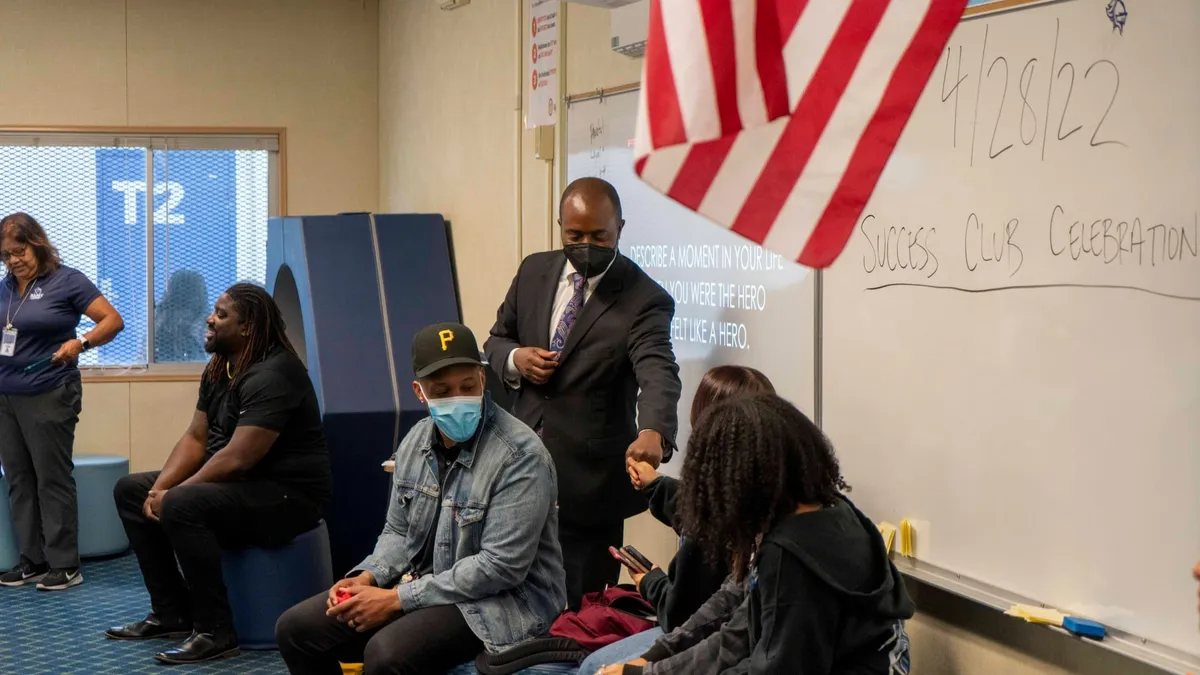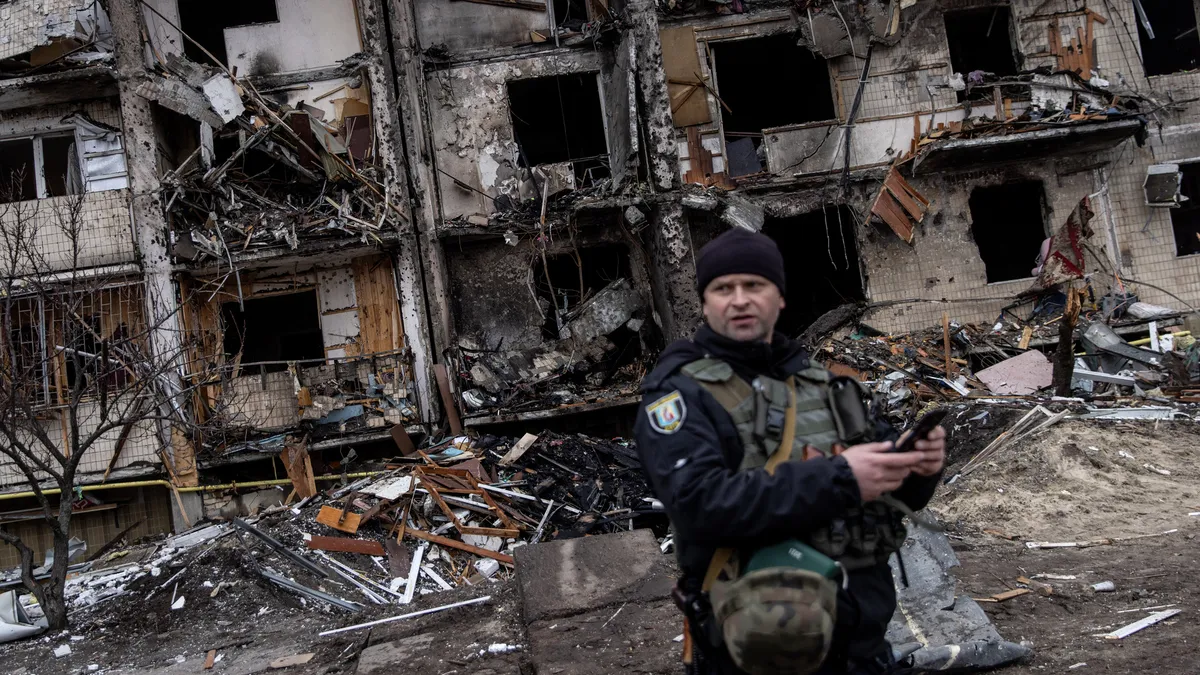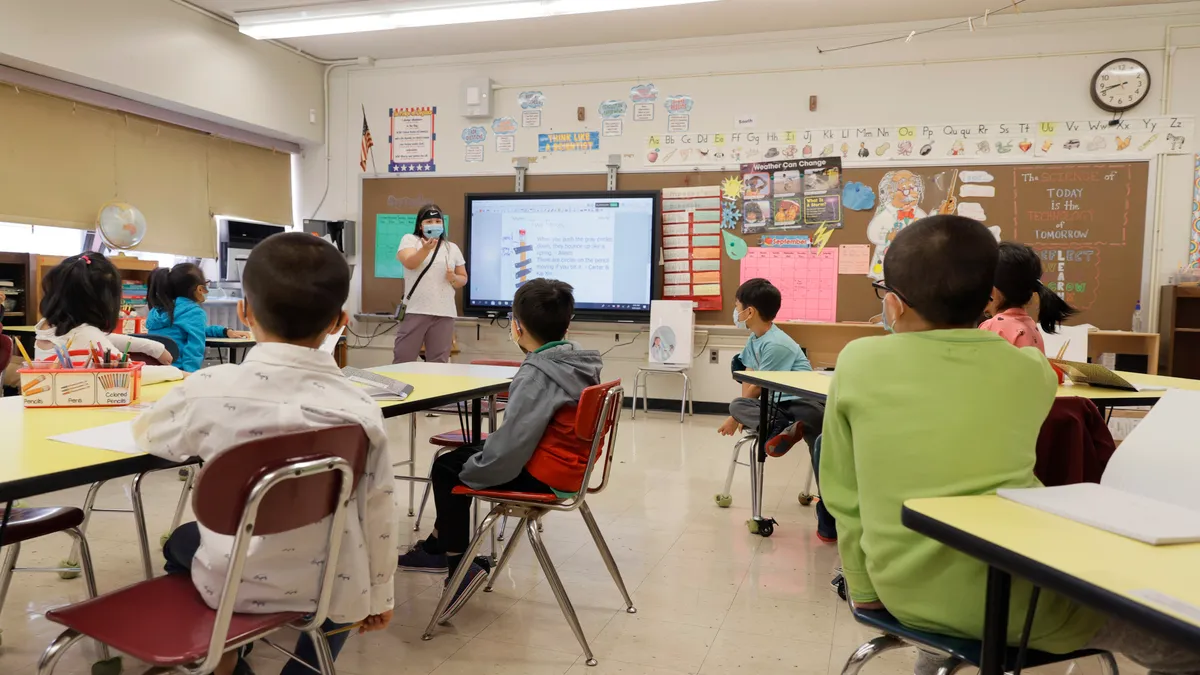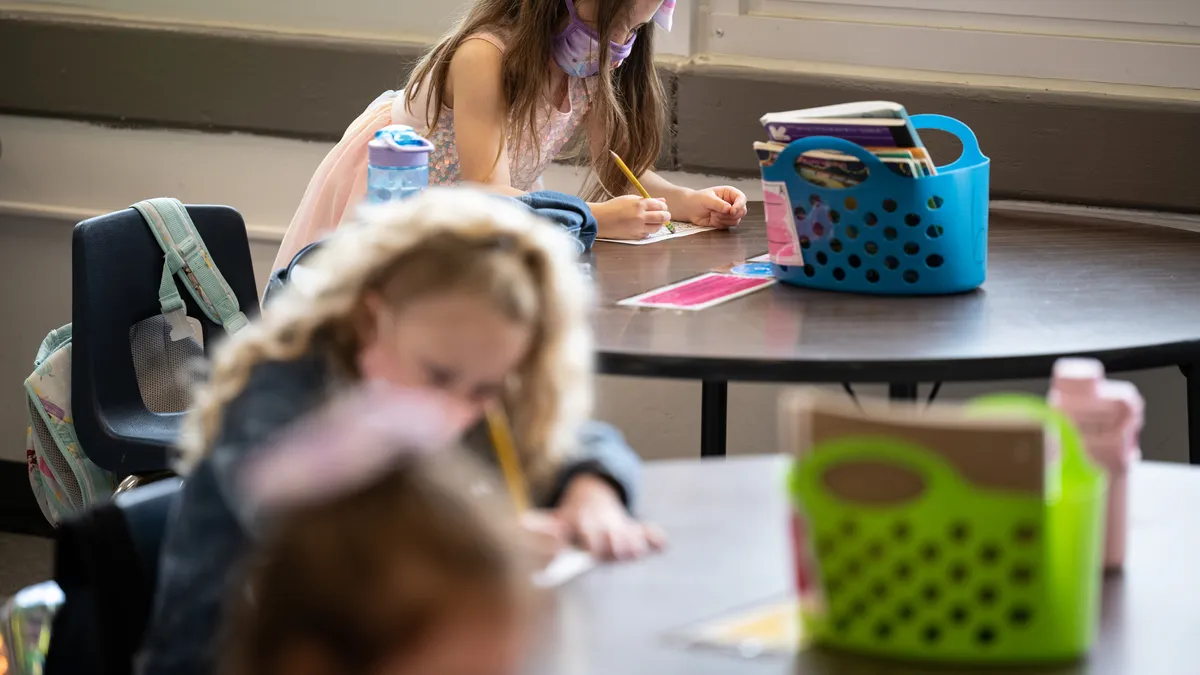SAN DIEGO — Ryan Powers first began to notice the effects of adverse childhood experiences in students 10 years ago when he was an elementary school principal in Brockton, Massachusetts. Aggressive outbursts or students “melting down” in the corner were among the behaviors that teachers were seeing.
What was common among those students was they had experienced trauma, and school was the place where their reactions to those experiences were often displayed.
“Sometimes we’re the worst trigger,” Powers told district leaders Thursday at the National Conference on Education, the annual meeting held by AASA, The School Superintendents Association. “We have the ability to make it better or worse.”
Now as assistant superintendent of the Bridgewater-Raynham School District in the state, he prioritizes professional development related to the issue and urges school leaders to find strategies that work in their schools.
“We have the responsibility as district leaders to champion this cause,” he said.
With the conference’s theme of personalization, the session on trauma-sensitive teaching focused on how to personalize culture so students feel supported and develop a sense of belonging in school — the qualities researchers have found can mitigate the types of reactions Powers was seeing.
“What’s really critical is that everyone shares an understanding of trauma’s impact on learning and the need to address this in a whole-school way,” said Susan Cole, a Harvard University law professor and the director of the Trauma and Learning Policy Initiative.
Re-allocating staff
But that doesn’t always mean hiring more social workers and counselors or buying new social-emotional learning programs — simply because schools often don’t have the resources to do that.
One way Powers’ district has approached the issue is by assigning paraprofessionals to specific students who need additional SEL support instead of assigning them based only on academic needs. “We re-allocated how we were using our current staff,” he said.
Denise Moody, the assistant director of student services for the Rochester Public Schools in Minnesota, reiterated grassroots solutions from schools and gathering perspectives from students, teachers and parents on school culture issues are important ways to “empower” teams at local schools to create more supportive school cultures.
“Don’t go into this work thinking there is the right program or trainer that is going to fix this,” she said.
But her district did also create a position for a “student resiliency specialist” based on students saying sometimes they needed someone to talk to about a problem or concern in their lives. These specialists have worked with high school students, for example, to create wellness rooms. Other tools include a “student of concern” form for teachers to submit to student services and a “help me” button on school dashboards used by students.
Working with the Mayo Clinic and a local public health agency, the district also participates in a universal screening process for ACEs as a way to better identify which students might need additional support. That’s an approach California Surgeon General Dr. Nadine Burke Harris advocates, and Moody said the data is useful for grant applications and working with community providers.
But quoting Alex Shevrin Venet, who teaches at the Community College of Vermont and provides PD on trauma-informed practices, Moody said, “Don’t be a 'trauma detective.' That’s not our role.”
Cole described trauma-sensitive practices as thinking first about whether an action — disciplining a student for being late to school, for example — helps the child feel safe or more connected to school and the adults at school. Ray McNulty, president of the Successful Practices Network and moderator of the session, agreed that sometimes the rules and regulations set by schools trigger the reactions Powers described.
The speakers emphasized it’s important to first focus on the relationships between adults in the school. Cole added that adopting a trauma-sensitive approach can be empowering for teachers, and teacher leaders often emerge through the work.
Not all principals will prioritize this work, Powers said. But he added teachers can still create a supportive classroom culture. He also shared data from one school in his district showing as teachers adopted new approaches to discipline, office referrals went down and student achievement increased.
“It does make a difference,” he said.
Understanding the brain
In another session, district leaders from Pennsylvania described a successful partnership with The Franklin Institute Science Museum in Philadelphia that has changed how educators approach their work.
The partnership between the Unionville-Chadds Ford School District in Kennett Square and the museum began when Superintendent John Sanville was looking for a place to host a retreat for administrators. While some principals seemed more enthused over the additional outing to the Phillies game, their exposure to what the museum teaches about the science of learning has grown into a lasting school-community partnership.
“Our partnership has made a meaningful difference for kids in the way that instruction is delivered,” Sanville said Thursday during one of AASA’s Knowledge Exchange Theater sessions.
The museum’s professional development and master teacher programs are extensions of its brain exhibit, which opened in 2014, explained Julia Skolnik, the assistant director of PD for the museum. It's also an example of how schools can partner with museums and other cultural institutions to support learning for teachers and students.
Much of the program, she said, focuses on dispelling myths related to how the brain works, such as whether people use only 10% or their brain, whether people are actually left- or right-brained, or whether one can effectively multitask.
Based on neuroscience, they can’t, she said.
“You are teaching your brain to be distracted,” Skolnik said, adding the museum’s work with educators is “shaking people’s beliefs about learning. That’s where this has made the biggest change.”
The Centennial School District in Warminster is among the 30 districts throughout Pennsylvania, New Jersey and Delaware now participating in the museum’s teacher training opportunities.
As part of his own education, Centennial Superintendent David Baugh said he was trying to better understand the difference learning and "high-performance learning." In graduate school and other administrator preparation work, "nobody was really teaching us about how he brain works."
Now close to 800 teachers in the district have been through the training. On a video created by students, one teacher said the experience has "rejuvenated" his career.
"It wasn't professional development; it was career development," he said. "Now I know why I'm doing what I'm doing."



